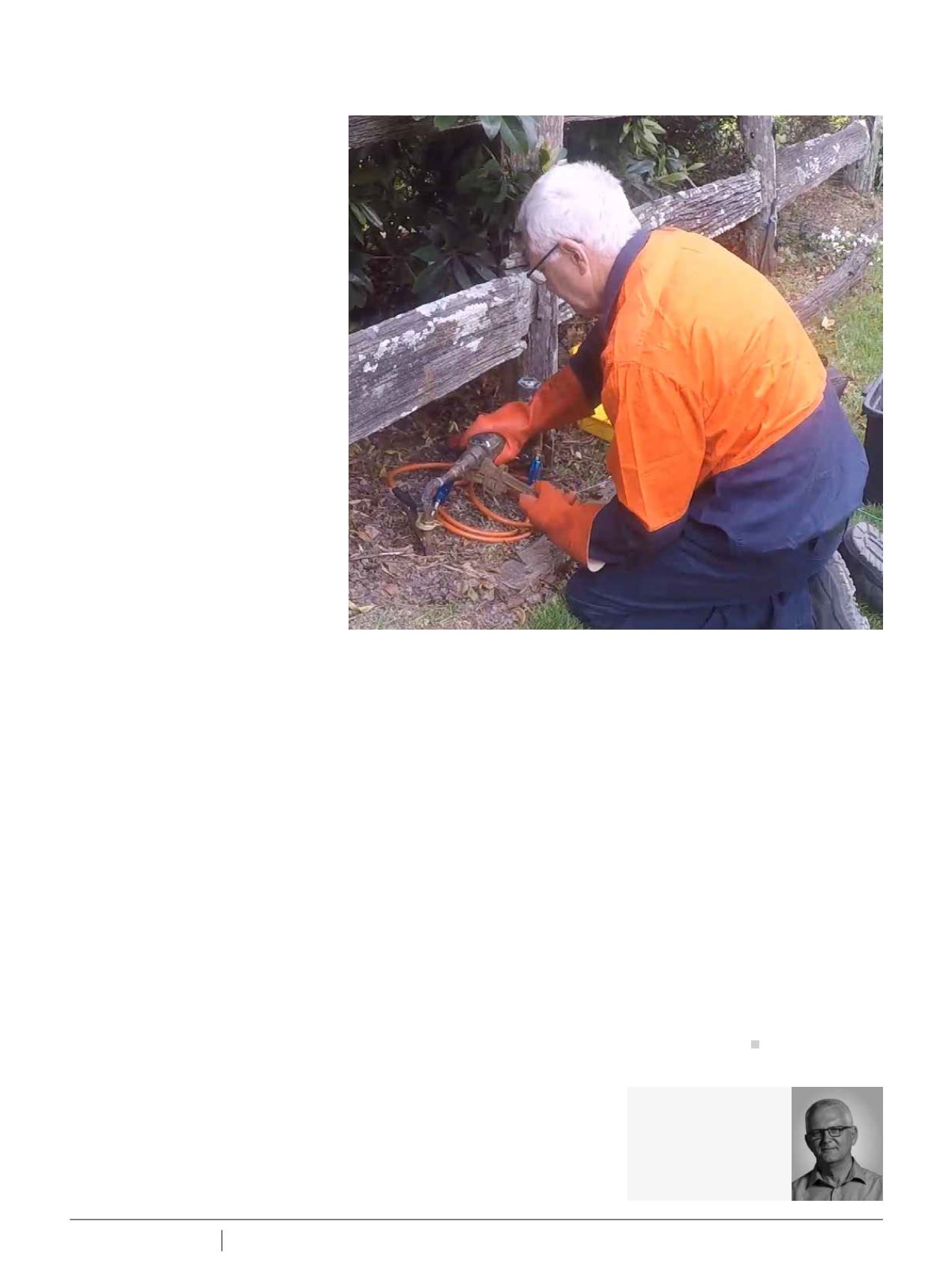

3 8
PLUMBING CONNECTION Winter 2022
Other electrical hazards include
using faulty appliances and leads,
digging up underground electrical
cables or sticking metallic items into
or near overhead mains. These types
of incidents can also result in the
electrocution of plumbers and water
authority technicians.
DEATHS & INJURIES
The following are some examples of
the tragic circumstances that can
occur if the ‘live’ waterpipe hazard isn’t
effectively managed:
The last water authority technician
that was electrocuted (the injury or
killing of someone by electric shock)
that I am aware of occurred in Sydney
in 2005. Allegedly, he was repairing a
water service at a residential property
using a bridging lead, but it wasn’t
connected one end or had been knocked
off during work.
A plumber was electrocuted in
Yennora in Sydney’s west in 2009 who
had been cutting a waterpipe without
a bridging conductor or any other
controls.
An apprentice was electrocuted
in 2008 when he tried to rescue his
boss, who had been cutting a metallic
waterpipe. The boss survived but not
the apprentice.
Denishar Woods was 11 years old
when she touched a ‘live’ metallic
tap in 2018. Her heart went into
ventricular fibrillation, and she suffered
permanent and debilitating brain
damage. Whilst Denishar isn’t a plumber
or water authority technician, the same
thing could have happened to these
tradies.
There are many examples of deaths
and severe injuries from faulty
appliances and metallic objects.
CONTRIBUTING FACTOR & CAUSE
Prior to a change in the electrical
‘Wiring Rules’ in 1979, electrical
installations generally used the metallic
waterpipes as the earth electrode.
From 1979 onwards, an earth electrode
driven in the ground has been used to
provide a return path for the neutral
current should a neutral connection
burn off. Additionally, metallic
waterpipes have still been required to
be connected to the electrical earthing
system.
If replacing the metallic water service
into a property, then an electrician will
be needed to install an earth electrode if
one is not already installed.
CONTROL MEASURES
Control measures include:
∫ have the electrical installation
checked by a competent electrician or
electrical inspector;
∫ use non-contact voltage testers for
an initial voltage test;
∫ voltage monitors connected to the
metallic waterpipes for the duration
of the work;
∫ screw-up bridging conductors;
∫ wear insulated gloves for the duration
of the job;
∫ turn off all electrical load;
∫ stop work on metallic waterpipes
during storms;
∫ dial before digging;
∫ look up and live; and
∫ use tested and tagged electrical
appliances.
ADDITIONALLY
Policies, procedures, and safe work
method statements will be needed to
ensure the safety of workers.
Training in the procedures and
management of the electrical hazard
will be essential.
CONCLUSIONS
Working on metallic waterpipes can
result in catastrophic incidents if the
electrical hazard hasn’t been managed
properly. Additionally, anyone receiving
an electric shock, no matter how small,
should seek medical attention.
Equipment, procedures and training
are also important in managing the
hazard. Companies like PowerLogic can
help in this regard.
Chris Halliday MElecPowEng,
GradDipMgt, AdvDipOHS,
CertTAA is Director of
Electrical Consulting and
Training Pty Ltd, trading as
PowerLogic, in NSW. Visit
www.powerlogic.com.auELECTROCUTION -
CHRIS HALLIDAY
A water meter being changed safely using appropriate controls.
















